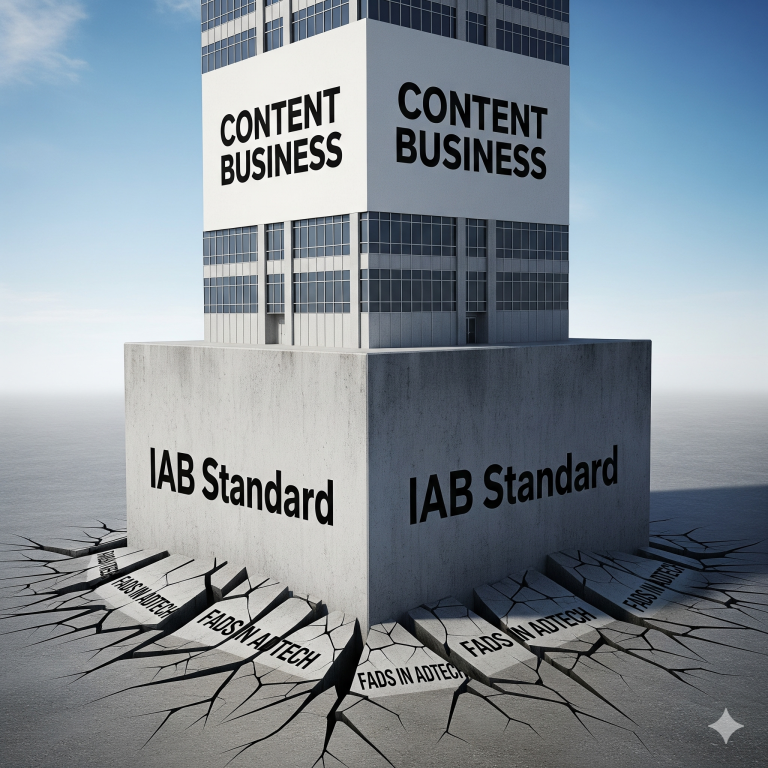The Crucial Role of a Robust and Granular Price Floor Strategy for Digital Publishers Using Google Ad Manager
Introduction
February 26th, 2025
Introduction
In the dynamic world of digital publishing, staying competitive and maximizing revenue is an ongoing challenge. Publishers are constantly seeking ways to optimize their ad inventory and generate the highest possible yield. One essential tool in their arsenal is the Price Floor strategy within Google Ad Manager. A well-crafted and granular Price Floor strategy can significantly impact a publisher’s revenue stream. In this blog post, we’ll delve into the importance of such a strategy and how it can benefit digital publishers.
What is a Price Floor Strategy?
Before diving deeper, let’s clarify a Price Floor strategy. In the context of Google Ad Manager, a Price Floor is the minimum CPM (Cost Per Thousand Impressions) that an advertiser must bid in order for their ad to compete in the auction. Publishers use Price Floors to ensure they receive a minimum acceptable price for their ad inventory. It essentially helps strike a balance between maximizing revenue and maintaining fill rates.
The Importance of Granularity
Granularity is a key factor in setting up a successful Price Floor strategy. You gain more control and flexibility over your pricing strategy by segmenting your inventory into various ad units, formats, and audience segments. Here’s why granularity is crucial:
Optimized Yield: Granular Price Floors allow you to tailor pricing to specific audience segments or high-value content, maximizing revenue potential for each.
Ad Quality Control: By setting different Price Floors, you can attract higher-quality advertisers who are willing to pay more for premium placements while avoiding spammy or low-quality ads.
Competitive Advantage: Publishers who take a granular approach can better react to market changes and competitor moves, staying agile in the fast-paced world of digital advertising.
Improved User Experience: Higher-quality ads contribute to a better user experience, which can lead to increased user engagement and longer on-site durations.
Striking the Balance
Setting an effective Price Floor strategy involves finding the delicate balance between revenue and fill rates. While aiming for the highest CPMs is enticing, overly aggressive pricing can lead to reduced fill rates and potentially harm long-term relationships with advertisers.
Here are some tips for striking that balance:
Data-Driven Decisions: Use data analytics to track the performance of different segments and adjust Price Floors accordingly. Monitor metrics like CPM, fill rate, and overall revenue.
Regular Review: Keep your Price Floor strategy up-to-date by regularly reviewing and adjusting it based on market trends, seasonal variations, and changes in advertiser demand.
Testing and Optimization: Don’t be afraid to experiment with different Price Floor levels. A/B testing can help you find the sweet spot that maximizes revenue without sacrificing fill rates.
Communication: Maintain open lines of communication with advertisers. Share your pricing strategy with them and be willing to negotiate when necessary to strike a mutually beneficial deal.
Conclusion
A robust and granular Price Floor strategy within Google Ad Manager is a powerful tool that can significantly impact a publisher’s bottom line. By optimizing your Price Floors with granularity, you can fine-tune your revenue while maintaining a positive relationship with advertisers. Regularly assess and adjust your strategy to stay agile and responsive to market changes. With the right Price Floor strategy, digital publishers can ensure sustainable growth and profitability in the ever-evolving world of online advertising.
Related Blogs

What “IAB Standard Banners” Look Like on a Modern Website
August 27th, 2025 by Doug Bishop
In the evolving landscape of digital publishing, display advertising remains a vital revenue stream. However, the way ads are presented and filled has transformed over the past decade. It is essential for publishers to grasp the significance of iab standard banners, recognize their presence on websites, and understand their impact on monthly earnings. The Basics: […]
Read More
Google Search Console Tutorial: Checking for CWV Errors
August 26th, 2025 by Doug Bishop
As a website owner, keeping an eye on your site’s performance is crucial for both user experience and search engine optimization (SEO). Google’s Core Web Vitals (CWV) are an important set of metrics that measure real-world user experience for loading performance, interactivity, and visual stability. CWV errors can negatively impact your search rankings, so it’s […]
Read More
How Core Web Vitals Became Central to Search Rankings
August 25th, 2025 by Doug Bishop
Google’s Helpful Content Update in 2023 first exposed a painful truth for publishers: visitor experience metrics are now revenue metrics. In 2025, that reality has hardened. Core Web Vitals — Cumulative Layout Shift (CLS), Interaction to Next Paint (INP), and Largest Contentful Paint (LCP) — have become the silent killers of search visibility, draining traffic […]
Read More